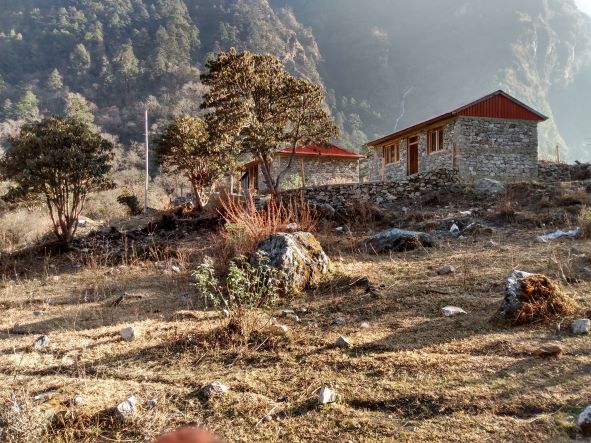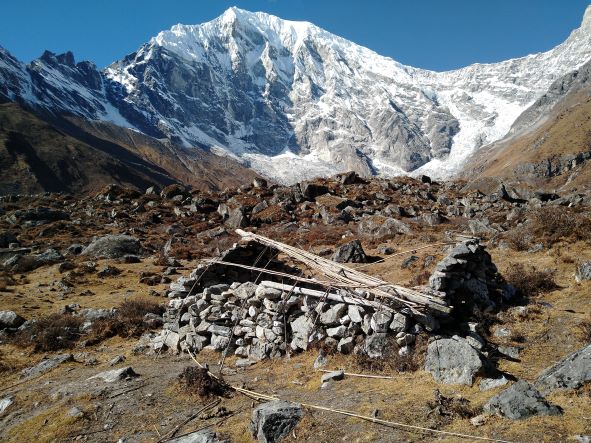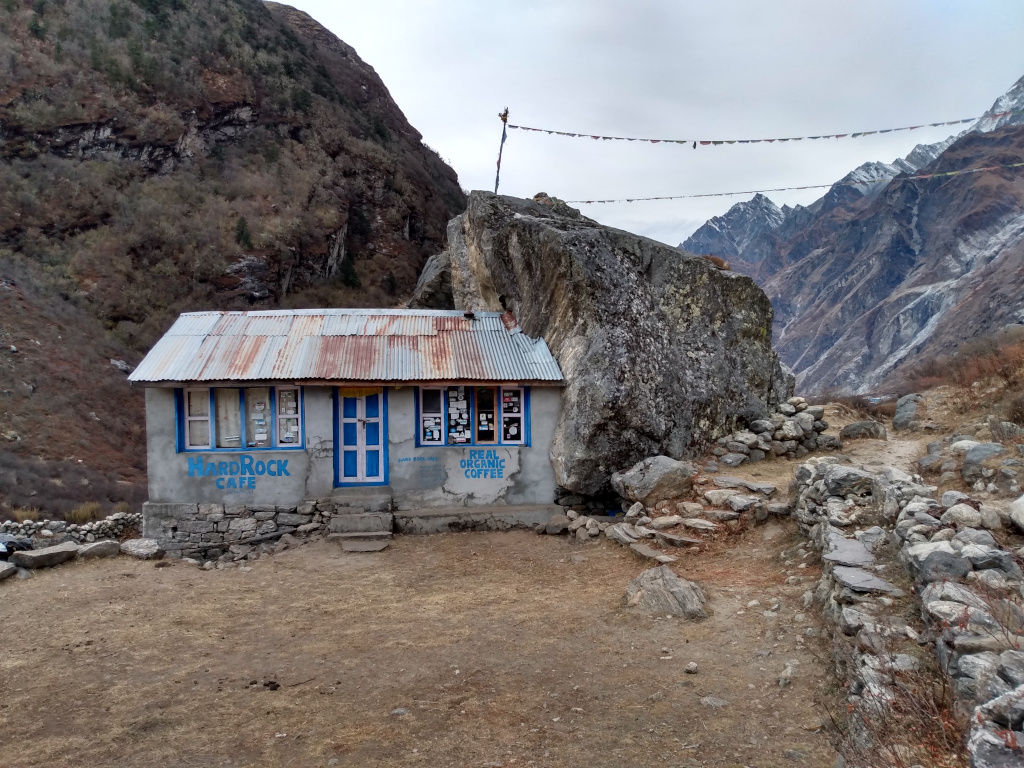Taking a journey through the Langtang Valley had been on our list since long before Covid, and we were finally making our way up the switchbacks along a rather invigorating stretch of road. Raju, our guide for the trek, had grown up in the region, and he pointed out the road to his childhood village as the bus continued to climb along the valley. We had read about the impact that the 2015 earthquake had had on the region, but as Raju filled us in we were in awe of the resilience of the residents of these breathtakingly beautiful yet often unforgiving mountains.
We spent the night before the trek in Syabru Beshi, a small village tucked away along the road that leads towards Tibet to the north. As we enjoyed tea and a local dish called “momo’s,” we listened to the stories of a man who lived in a village halfway up the Langtang Valley. Temba explained that he ran a “tea house” for trekkers at 3400 meters, and also made the rather vertical commute to the main village here in Syabru Beshi to teach students and serve as principal in the local school! Temba, an ethnic Sherpa whose ancestors hailed from the high plateaus of Tibet to the north, shared the struggles and joys of life in this intriguing valley cut off from the rest of the world, and only accessible by a 2 day trek from the nearest road. We agreed to meet Temba at his homestay at the top of the valley in three days, and he informed us that he planned to teach in the school tomorrow and then climb back up to his homestay in the evening. The trek that would end up taking us three and half days, he brushed off as an evening stroll after work…
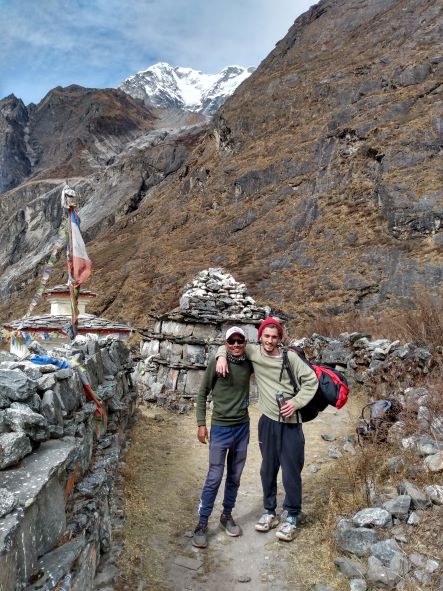
In the morning our trip leader Raju woke us up early to get ahead of the heat of the day, and then relentlessly led the way up a series of ancient stone stairs climbing along the raging river below. To us it appeared that the trail went straight up a cliff, but Raju informed us that this was the “easy route,” and that the pack mules who carried supplies to the settlements further up the valley used the shortcut up the steeper route. When we came to our first suspension bridge, we were greeted with a colorful array of Nepali prayer flags strung across the suspension bridge, with a smiling Nepali couple patiently waiting for us on the other side. Raju informed us that after crossing the bridge we would be invited in for a mandatory tea break, and the thought of lunch and tea was enough to overcome my hesitations about the structural integrity of this beautiful and yet rather intimidating structure. The bridge was strung between two boulders and spanning the mountain stream now turned raging river by a recent rainstorm. Our first teahouse on the trek was breathtaking, and as steam from the waterfalls below billowed up, breaking through the rather intense mid afternoon heat. At these lower elevations the forests in Nepal are subtropical, with dense rhododendron undergrowth and even monkeys. Further up the valley the dense forests gave way to open alpine meadows, used for centuries as yak grazing pastures.
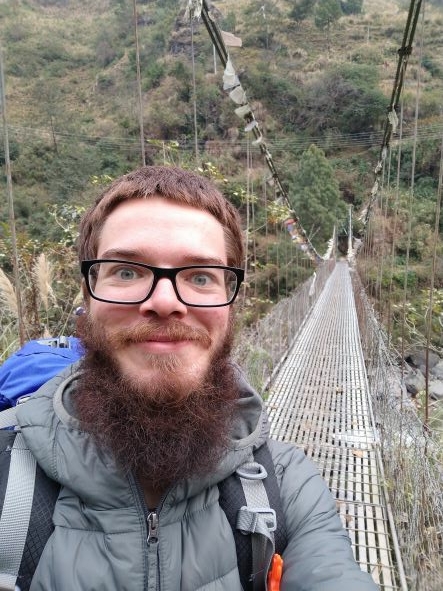
We spent the night at a small settlement of tea houses known as Llama Hotel, in a simple but quaint guest house that serves as a trekker’s accommodation a third of the way up the valley. As we were enjoying the standard local fare of rice and lentils, affectionately known as dhal bat, we listened to our hosts share about the impact of Covid on the economy. The valley depends heavily on tourism to supplement the meager revenue from the traditional herding lifestyle, and directly following the recovery from the 2015 earthquake, the valley was hit by a year long closure of the country to the bulk of foreign trekkers. Throughout the trek we were greeted with eager anticipation as the teahouse owners looked forward to the promised return of travelers to the region. We learned that all of the food in the valley is incredibly expensive by local standards, due to the fact that it has to be packed up thousands of meters over a two day journey, and the residents of the valley were sorely feeling the weight of Nepal’s economic turmoil at large.
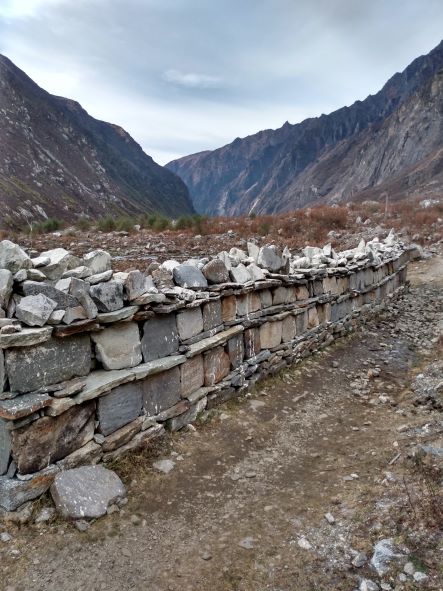
In the morning we followed Raju further up the valley as the view of the snow covered peaks on the Tibetan border opened up into a 360 degree panorama. We passed the village of Langtang, where we met a friend of Raju’s. Kesang was a local Sherpa with a relentless smile, and a rather brisk walking pace that had to be constantly checked in order to allow for a group of rather out of shape western trekkers (who had packed way too much gear in our packs by Nepali standards). As we walked with Kesang we learned that in his younger days he had guided climbers on a multitude of Nepal’s famous peaks. Now semi-retired as a climbing guide, he ran a guest house for trekkers at the top of the valley, nestled in a small group of tea houses surrounded by glaciers and soaring peaks. As we followed Kesang and Raju we passed ancient stone walls known as “mani walls,” some of them stretching for kilometers along the valley. The mani walls are engraved with relief carvings of ancient Buddhist mantras, and often painted with vibrant colors. We passed a Buddhist monastery and listened intently as Kesang described the beautiful and yet oftentimes difficult lifestyle of the monks in the high elevation monasteries.
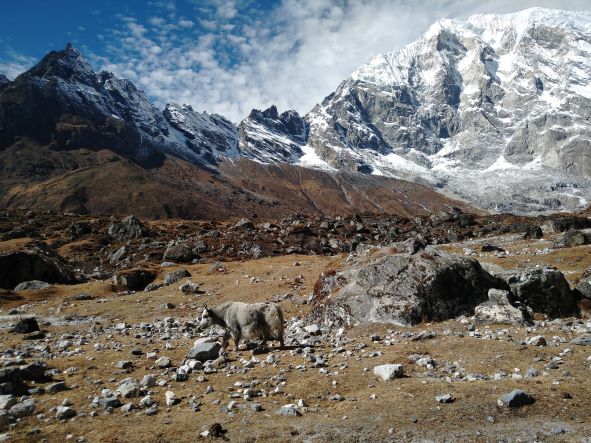
Further up the valley we passed a series of abandoned stone and bamboo structures scattered along the mountain side. We learned that these were traditionally used as shelters for the yacks to sleep in. Not surprisingly, the entirely Buddhist residents of the valley only use the yacks for their hair and milk. Kesang informed us that in the Langtang Valley they only eat the yacks if they die of natural causes. He also promised that we would have a chance to try yack cheese if we desired to do so at dinner, and it was a split decision for our group of foreign trekkers.
Upon arriving at Kesang’s guest house, we hardly had time to take off our packs before he had a fire going in the woodstove, and a kettle ready for tea and coffee. As the sun set over the peaks, the high elevation November cold quickly drove us into the common area of the guest house, a simple yet carefully decorated room with benches circled around an iconic wood burning stove. As dinner was being prepared, a steady stream of Sherpas dropped in, excited to see the first signs of travelers returning to the region. A local violin sized instrument known as a “Sirangi” was brought out, and despite my best efforts I failed to imitate Kesang’s skills on this intriguing instrument.
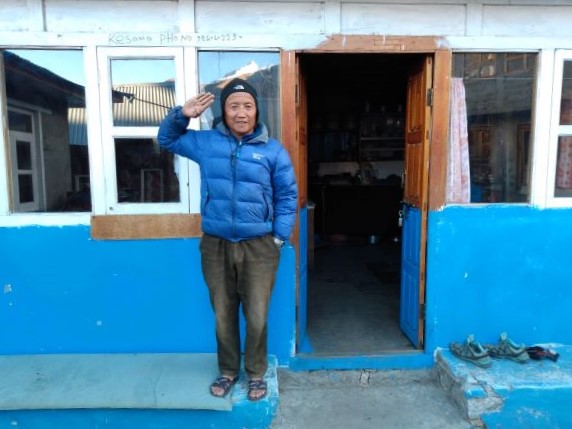
Breakfast came early as we were greeted with local flatbread and eggs, and we were ready to take on the last day of the climb towards the top of Kyanjin Ri, at 4800 meters. We were certainly feeling the effects of the elevation this morning, and a light dusting of snow had fallen overnight. Kesang told us that after a few weeks snow would come to the Langtang Valley in full force, and insisted that winter was the most beautiful time of the year in the valley. He smiled warmly and invited us to stay with him for a few more weeks to see the mountains covered in snow for ourselves, but unfortunately we had to be back in Kathmandu in a week. Kesang smiled warmly and encouraged us as we fought our way to the summit, and a mandatory snack break overlooking the Tibetan plateau to the north ensued.
We can testify to the fact that Kyanjin Ri is one of our favorite spots in Nepal, and Kesang’s guest house is waiting to greet the trekker who will take the time to explore this valley buried deep in the heart of the Himalayas. To read more about this intriguing valley check out our Langtang Valley Trek itinerary, or make a trip to visit Kesang yourself.
